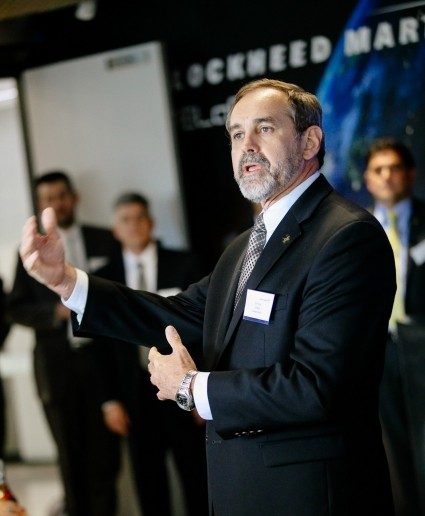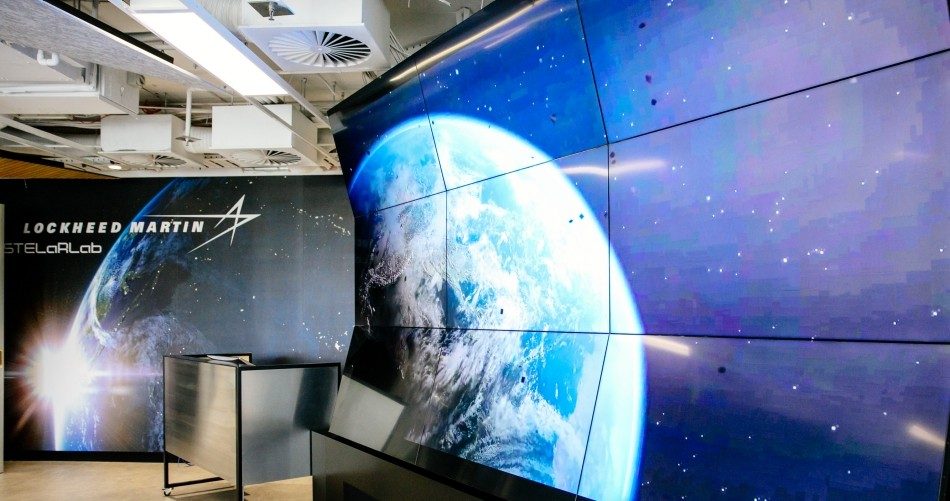Pushing the boundaries of what is conceivable: that’s the remit of Lockheed Martin’s new research and development (R&D) facility in Australia.
Based in Melbourne, the Science, Technology, Engineering Leadership, Research Laboratory (STELaRLab) is Lockheed Martin’s national R&D operations centre for our current university-based research portfolio in Australia.
Researchers will initially explore several fields, including: hypersonics research; quantum information science; space systems research; radar and signal processing; and C4ISR systems research. But it doesn’t stop there. The breadth of research is expected to expand, as partners and capability are identified.
Director Tony Lindsay is acknowledged as one of Australia’s preeminent defence scientists and is recognised internationally for this leadership and achievements in electronic warfare and intelligence, surveillance and reconnaissance.
His vision for STELaRLab is nothing if not ambitious.
“STELaRLab researchers will think beyond the technology challenges we face today,” he says. “Because, chances are, someone, somewhere, is probably already some way to solving those short to medium term problems.
“Instead, STELaRLab will go beyond what is probable, and push the boundaries of what is even conceivable. Our focus will therefore be on the future, conceptualising the challenges we will face in tomorrow’s battlespaces, and demonstrating the art of the possible in how we solve them.”
But it’s a vision he says is realistic, working as he says with some of the best minds across a broad range of disciplines right here in Australia.
“There is no question Australia punches well above its weight and is widely acknowledged for research excellence,” Dr Lindsay says.
"We are very much an innovation nation. But we have some way to go in terms of consistently developing our research to a level of technical operational maturity.”
“It is my hope that STELaRLab becomes a globally recognised centre of R&D excellence, and a conduit for advancing our home-grown technologies.
“It is our vision that the work done at STELaRLab will contribute significantly to the maturation of technologies that will one day be deployed in defence of our nation.”
But the researchers at STELaRLab won’t be working in isolation. STELaRLab will form an integral part of the Lockheed Martin’s research and development ecosystem, sitting alongside revered names such as Skunk Works, the Advanced Technology Centre and The Lighthouse.
STELaRLab will tie directly to that deep technical expertise, domain and mission knowledge, and an information technology infrastructure and toolset that supports operational analysis, modeling and simulation, and advanced visualisation for our most demanding customers. This centre will enable Lockheed Martin to engage at close quarters with Australia’s science and technology community, such as universities, as well as undertake research and development activities directly with key partners like Defence Science Technology Group and the Australian Defence Force.
Identifying, collaborating and investing in the capabilities of Australia’s local science and technology ecosystem will provide significant advantages to Lockheed Martin’s business and a pipeline to the talent necessary to advance scientific discovery and continue to meet the ongoing defence and security needs of Australia and its allies.
It’s the reason that Melbourne was chosen for the location of Lockheed Martin’s first multi-disciplinary laboratory outside of the US. The well-established, quality PhD system in Australian universities was a key discriminator in the selection of Australia as the location of STELaRLab.
Through STELaRLab, Australia’s finest minds and academic institutions will have the unique ability to access a truly global leading-edge R&D capability and growth opportunities, backed up not only by the Lockheed Martin enterprise but also through key partners.
Vice-President and Chief Executive of Lockheed Martin Australia Vince Di Pietro says investing in research and development, and developing innovative technologies is at the heart of everything Lockheed Martin does.
“We are proud to partner with Australia’s research and industry communities to support our global supply chains, providing opportunities for technology transfer, innovation, local skilled jobs and business growth,” he says. “And we are committed to ensuring that our technologies and best practice capabilities support our local partners to best meet the challenges and opportunities of an increasingly changing world.”
The identification of the defence industry in the 2016 Defence White Paper as a fundamental input to capability, and the release of the National Innovation & Science Agenda, were signals to industry of the Australian Government’s commitment to creating an environment conducive to investment in research and development. But they also require a concerted focus on capability challenges, and the role of the industry sector to confront them.
“The establishment of STELaRLab, represents an escalation in our commitment to Australia to meet these challenges,” Di Pietro says. “Never has the future looked so bright for defence innovation and technology. Establishing the STELaRLab here is recognition of the international respect for the standard of the research being completed in Australia, as well as the standing of the researchers.”
And Tony Lindsay is hoping that in time it will become an incredible legacy of research and development for Australia.
“Who knows the sorts of breakthroughs that might be achieved here or through our local research partnerships? What world-class talent might work here or lead associated STELaRLab research programs? The future holds endless possibilities, and it is an exciting prospect to be here at the very beginning.”






